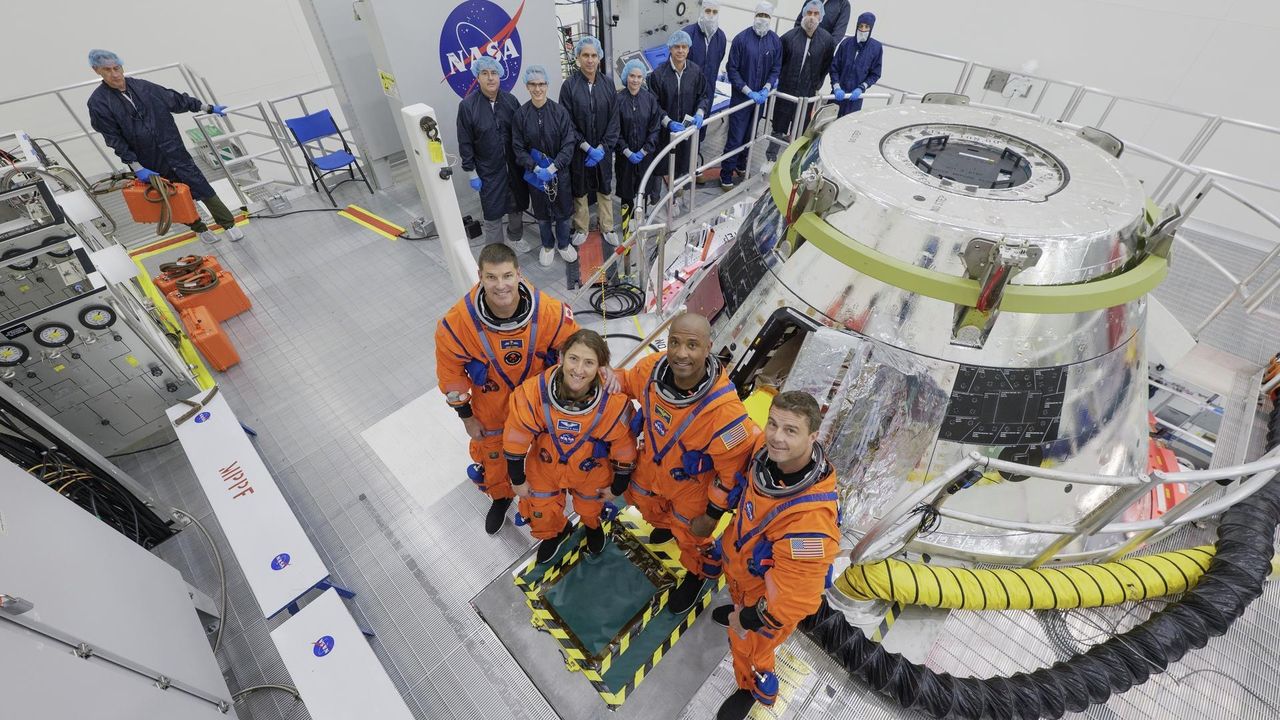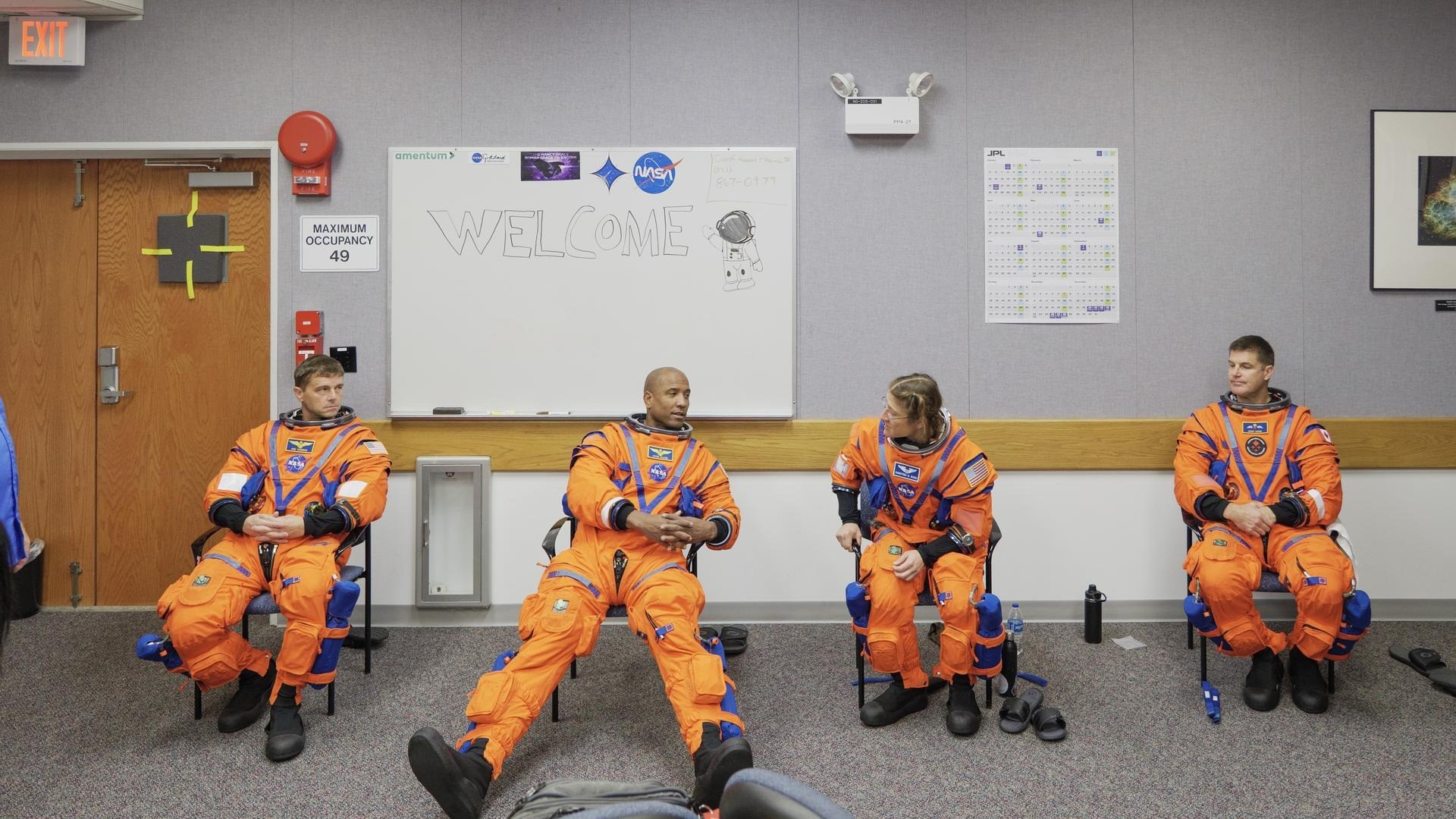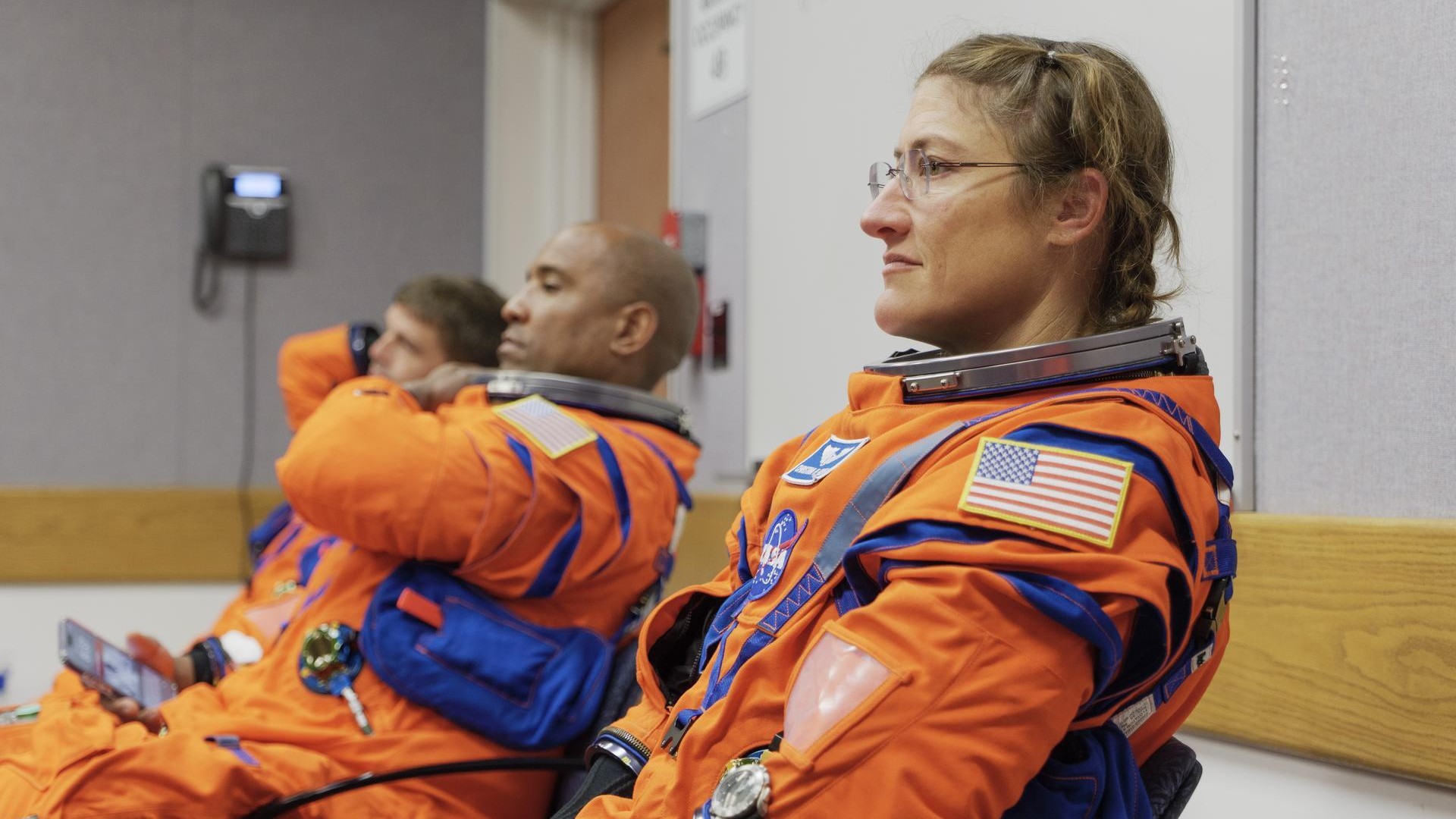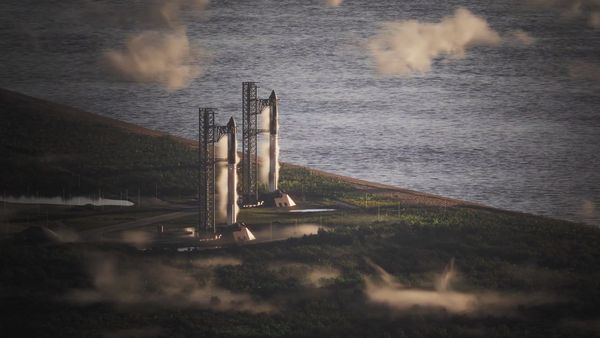
The four crewmembers of NASA's next moon mission are moving closer to their upcoming launch.
The Artemis 2 crew consists of NASA astronauts Reid Wiseman (commander), Victor Glover (pilot), Christina Koch (mission specialist) and the Canadian Space Agency's Jeremy Hansen. After experiencing multiple delays, the quartet is scheduled to launch no earlier than April 2026 on their 10-day mission around the moon and back. With just months left before the historic launch, the Artemis crew is hard at work finishing their training and preparations. As part of that training, the whole crew suited up in their launch and entry suits to enter their Orion spacecraft together for the first time on July 31 at NASA's Kennedy Space Center (KSC) in Florida during what is known as a suited crew test.
Before the test even began, the crewmembers were sharing their excitement about the milestone. "We are excited that today is the first time that we will all be in the vehicle since it's been in this facility, and we're going to be in there together, which is really exciting. That's a first all around," Koch told reporters during a press gaggle at KSC on July 31. "Some of us have had different opportunities to interact with flight hardware on different trips, and obviously that's always an incredible day. But when you're in your launch and entry suits, you're with the crew you're going to be on the pad with, that is absolutely phenomenal."
The suited crew test saw Wiseman, Glover, Koch and Hansen meet up at the Multi-Operation Support Building at KSC to suit up in their Orion crew survival system spacesuits, the same ones they will wear on launch day. From there, the crew traveled to a different building, the Multi-Payload Processing Facility, to enter the Orion crew capsule together.

Orion was powered on with the crew inside, giving them a feeling for what they'll actually experience on launch day. They were plugged into the capsule's life support and communications systems as well as given a variety of simulated ground and flight conditions. These included putting the crew through challenging scenarios such as sudden leaks or life support system malfunctions. The goal was to help "ensure the crew is ready for any scenario," NASA wrote in a statement.

Once out of their launch and entry suits, the crew also practiced activities they will be called upon to do once they are in Orion and on the way to the moon, such as stowing unneeded launch equipment. The crew also familiarized themselves with the procedures they'll use during their 10-day mission such as those regarding sleep arrangements and the "hygiene bay" inside the spacecraft.

Artemis 2 has some big shoes to fill. Not only is it the first crewed flight to the moon since Apollo 17 and the farthest humans have flown from Earth since the fateful Apollo 13 mission, but it will also follow the success of 2022's Artemis 1 mission. Artemis 1 saw NASA's massive Space Launch System rocket take off successfully on its first flight to send the Orion capsule to orbit around the moon then land in the Pacific Ocean after a 25.5-day journey.
According to Koch, that success sets a high bar for her and her crewmates. "Ever since we were chosen as crew — and it's been on posters around all the centers — that in some ways, the huge success of Artemis 1 is actually something we need to think about as a risk or even a threat to Artemis 2, because we have to keep our vigilance up," Koch said during the July 31 press gaggle.
"I would say one of the things we learned is that despite our successes, we have to keep asking hard questions, and we have to keep tracing down things that are acting like we don't expect."







